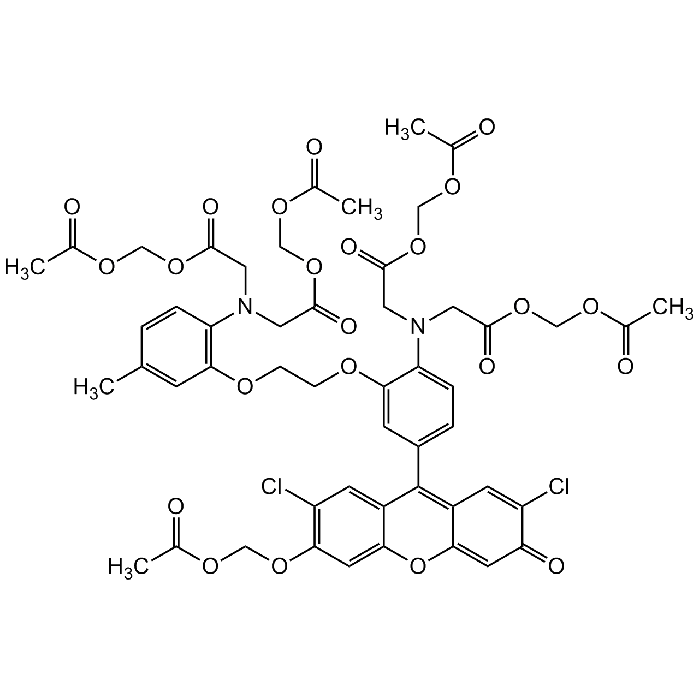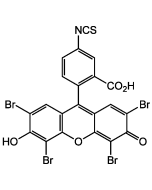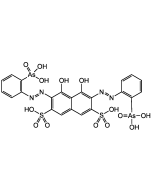Cookie Policy: This site uses cookies to improve your experience. You can find out more about our use of cookies in our Privacy Policy. By continuing to browse this site you agree to our use of cookies.
Chemodex
Fluo-3 AM

| Product Details | |
|---|---|
| Synonyms | Fluo-3 AM |
| Product Type | Chemical |
| Properties | |
| Formula | C51H50Cl2N2O23 |
| MW | 1129.85 |
| CAS | 121714-22-5 |
| Source/Host Chemicals | Synthetic. |
| Purity Chemicals | ≥90% (TLC) |
| Appearance | Dark red powder. |
| Solubility | Soluble in DMSO. |
| Declaration | Manufactured by Chemodex. |
| Other Product Data |
Click here for Original Manufacturer Product Datasheet |
| InChi Key | PTPUOMXKXCCSEN-UHFFFAOYSA-N |
| Smiles | CC(=O)OCOC(=O)CN(CC(=O)OCOC(C)=O)C1=CC=C(C=C1OCCOC1=C(C=CC(C)=C1)N(CC(=O)OCOC(C)=O)CC(=O)OCOC(C)=O)C1=C2C=C(Cl)C(=O)C=C2OC2=CC(OCOC(C)=O)=C(Cl)C=C12 |
| Shipping and Handling | |
| Shipping | BLUE ICE |
| Short Term Storage | +4°C |
| Long Term Storage | -20°C |
| Handling Advice | Protect from light and moisture. |
| Use/Stability | Stable for at least 2 years after receipt when stored at -20°C. |
| Documents | |
| MSDS |
 Download PDF Download PDF |
| Product Specification Sheet | |
| Datasheet |
 Download PDF Download PDF |
Ca2+-indicator fluo-3 for use with visible-light excitation sources in flow cytometry and confocal laser-scanning microscopy. Since about 1996, fluo-3 has also been extensively used in cell-based high-throughput screening assays for drug discovery. Fluo-3 AM is essentially nonfluorescent until it is hydrolyzed intracellularly and/or in the presence of Ca2+. The green-fluorescent emission (~525 nm) of Ca2+-bound fluo-3 is conventionally detected using optical filter sets designed for fluorescein (FITC). As prepared by Minta, Kao and Tsien, fluo-3 was originally reported to undergo an ~40-fold increase in fluorescence upon binding Ca2+.
(1) T. Toyofuku et al.; Geochem., Geophys., Geosyst. 9(5) | (2008) | (2) D.M. Plank et al.; Meth. Cell Sc. 25(3-4), 123 (2004) | (3) P. Vandenberghe et al.; J. Immun.Meth. 127, 197 (1990) | (4) J.P.Y. Kao et al.; J. Biol. Chem. 264, 8179 (1989)













